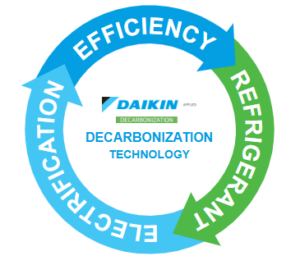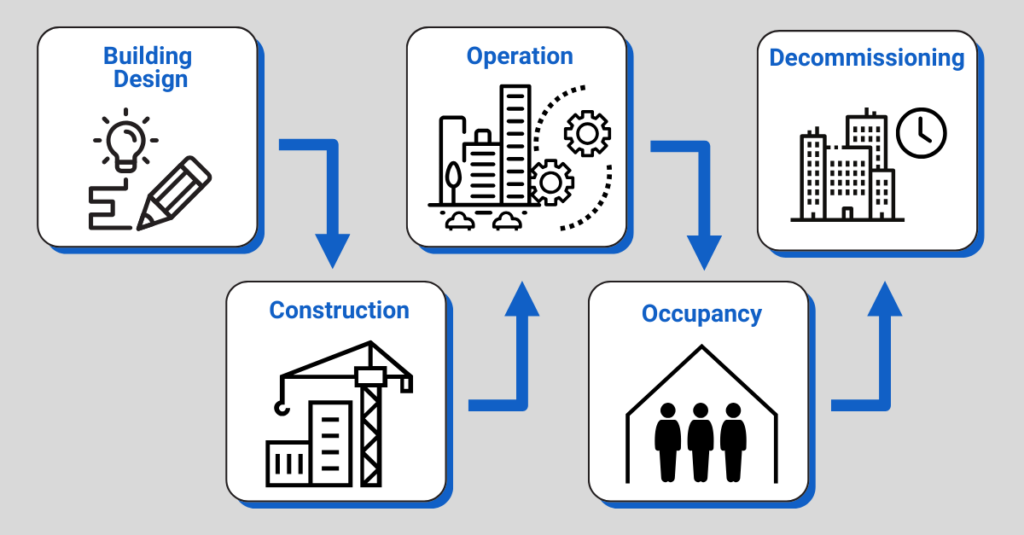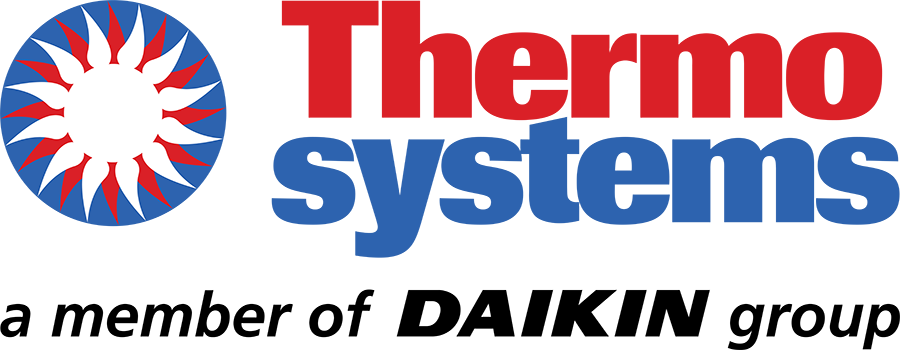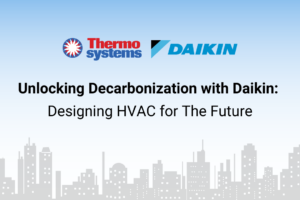According to the United Nations Environment Programme (UNEP), 40% of global energy is consumed by the building industry—an undeniable fact that is sparking change. As awareness grows, groundbreaking solutions in the HVAC industry are gaining momentum, reshaping the future of the sector. Every building’s journey toward sustainability starts with its initial design choices, which lay the foundation for its long-term energy efficiency and role in the industry’s decarbonization efforts. In this article, we explore the shift toward eco-friendly HVAC practices, decarbonization, and how our combined efforts can reduce carbon emissions.

Many industry leaders are driving this movement, including Daikin Applied, one of our longest-standing manufacturing partners. They are advancing HVAC technology through efficient HVAC solutions, electrification, and low-GWP refrigerants to align with an evolving power grid. Together, we are striving to reduce the rate of climate change for the future of our environment. With a goal of cutting carbon emissions by 50% by 2030, we are proud to work alongside Daikin to support the industry’s transition. Learn more about Daikin’s path to decarbonization below.
The Importance of Decarbonization in Building Design
ASHRAE defines decarbonization as the process of reducing or eliminating greenhouse gases. In HVAC, decarbonization focuses on minimizing human made emissions throughout a building’s entire lifecycle. This process includes key stages such as:

Energy consumption is a pressing issue, driving greenhouse gas emissions, depletion of natural resources, and rising costs. Thoughtful building design is essential in mitigating these effects.
The HVAC industry is evolving to meet this demand for a change, focusing on three key strategies:
Energy Efficient Equipment
Choosing the right equipment during design reduces operating costs and shrinks your carbon footprint.
Electrificiation
Modernize your equipment with cutting-edge technologies to reduce dependence on natural resources and enhance system efficiency.
Lower GP Refrigerants
Stay on track with the shift to eco-friendly refrigerants that reduce HVAC environmental impact.
HVAC systems significantly impact a building’s energy use. Adopting these decarbonization methods can significantly reduce emissions, minimize fossil fuel reliance, and deliver long-term benefits such as lower costs, extended equipment life, and enhanced sustainability.
Read below to learn more about how HVAC impacts decarbonization efforts!
HVAC’s Role in Energy Consumption
HVAC systems are responsible for 39% of a building’s total energy consumption [1]. Each year, air conditioning alone produces over 100 million metric tons of CO2 [2]. Given this significant impact, decarbonization technologies provide a powerful solution to drastically reduce CO2 emissions from HVAC systems. By implementing these methods, HVAC systems can be optimized to cut energy consumption by up to 50% [10].
HVAC energy consumption varies by building, but several key factors consistently impact efficiency:
- Heating and cooling source
- System size and capacity
- Airflow, ventilation, and insulation design
- Temperature management
- System age
- Additional operational factors
To address both safety and efficiency in buildings, regulatory bodies like ASHRAE and the International Code Council (ICC) have established comprehensive codes and standards to ensure HVAC systems operate optimally while minimizing risks. Alongside policies on refrigerant phasedowns and carbon caps, the regulatory landscape for HVAC is rapidly evolving.
Below are some of the many crucial regulations that support these goals.
- Key U.S. commercial building code that ensures safe construction with optimal ventilation, air quality, and thermal comfort.
- Emphasizes system design and maintenance to enhance occupant safety and reduce overall HVAC energy consumption.
- Establishes minimum energy efficiency standards for residential and commercial buildings.
- Covers HVAC, insulation, lighting, and power usage.
- Reduces energy consumption and environmental impact.
- Ensures buildings remain resilient while minimizing risks like CO₂ buildup or heat stress.
- Establishes minimum performance requirements to cut energy use and costs.
- Regulates energy efficiency for appliances and equipment, including HVAC.
- Introduced SEER2 ratings in 2023 for more accurate real-world efficiency metrics.
- Helps lower environmental impact through enhanced efficiency.
- Sets standards for HVAC system design, installation, and maintenance.
- Ensures safety, efficiency, and proper functionality, while also maintaining occupant comfort and system reliability.
- Protects against risks like poor ventilation, equipment failure, and other hazards.
How To Lower Carbon Emissions for Your HVAC System
Numerous advanced technologies and control strategies have been developed to enhance energy efficiency in HVAC systems, including innovations like energy recovery systems and desiccant heating and cooling solutions. When paired with strategic design, these technologies improve system functionality while delivering substantial energy savings and reducing carbon emissions.
Continue reading to explore how you can optimize your HVAC system.
Upgrade to Smarter, More Efficient Technologies
Prioritize Thoughtful HVAC System Design
Maintain Optimal Indoor Air Quality (IAQ) and Humidity
Have Factory-Trained Professionals Maintain Your Equipment
At Thermosystems, we help you integrate innovative solutions to achieve your energy goals. Our expert design team customizes systems using premium equipment, while our factory–trained service team ensures long-term performance with proactive maintenance and support.
The Future of HVAC: A Path to Sustainability
As the HVAC industry moves toward decarbonization, innovation is unlocking new possibilities. Technologies like AI, smart systems, and renewable energy are just the beginning, with even more advancements on the way to transform HVAC. As a major contributor to global emissions, HVAC systems play a critical role in shaping a more sustainable future. By embracing energy-efficient technologies, electrification, and low-GWP refrigerants, we can drive meaningful change that reduces carbon footprints while enhancing system performance.
Better Buildings Start With Better Partners
At Thermosystems, we are committed to our partnerships to lead this transition. We are here to help you achieve optimized systems that deliver efficiency and reliable performance. Ready to explore what’s possible? Let’s build a more efficient, sustainable future for HVAC together.
References
[1] https://www.sciencedirect.com/science/article/pii/S235248472101427X
[2] https://www.energy.gov/energysaver/air-conditioning
[3] https://www.energystar.gov/saveathome/heating-cooling
[4] https://www.mdpi.com/2071-1050/16/24/10941
[5] https://www.mdpi.com/1660-4601/19/2/1016
[6] https://www.ashrae.org/technical-resources/bookstore/standard-90-1
[7] https://www.ashrae.org/about/cebd-building-decarb-101
[8] https://www.daikinapplied.com/decarbonization
[9] https://renewableinstitute.org/images/unep%20info%20sheet%20-%20ee%20buildings.pdf
[10] https://rpsc.energy.gov/tech-solutions/hvac
[11] https://www.ashrae.org/technical-resources/bookstore/standard-90-1
[12] https://www.energycodes.gov/commercial-and-residential-building-energy-codes
[13] https://www.ahrinet.org/2023-energy-efficiency-standards
[14] https://iapmo.org/codes-standards-development/code-development/uniform-mechanical-code






